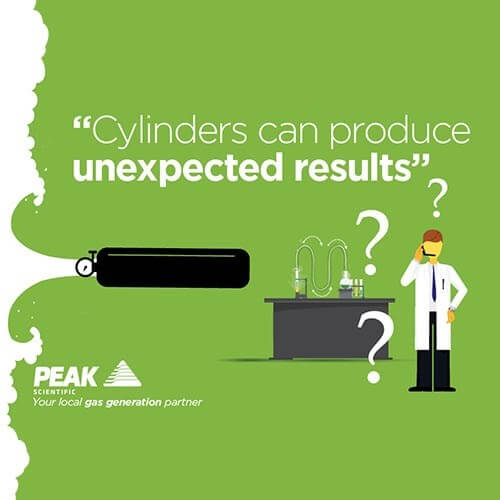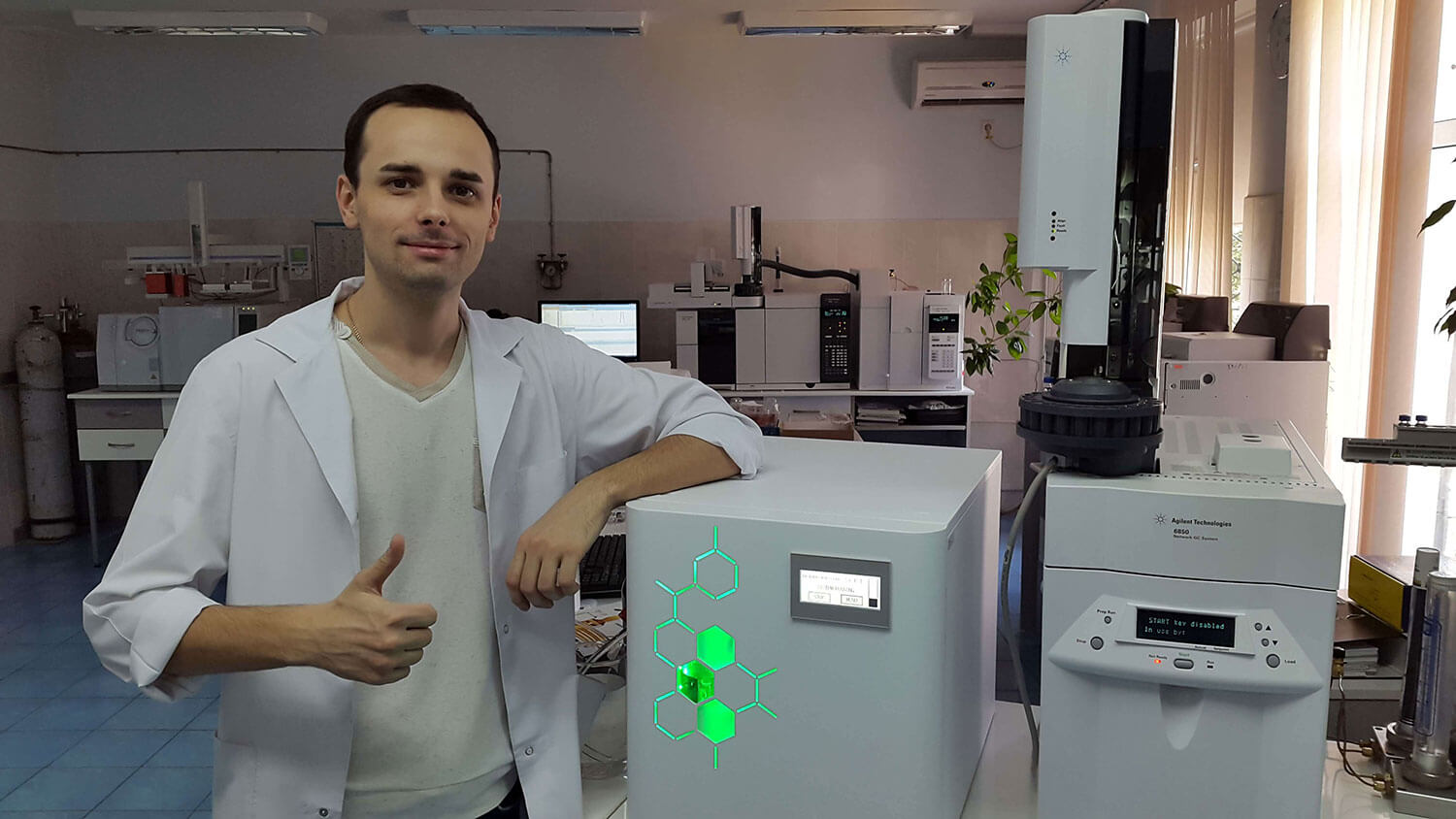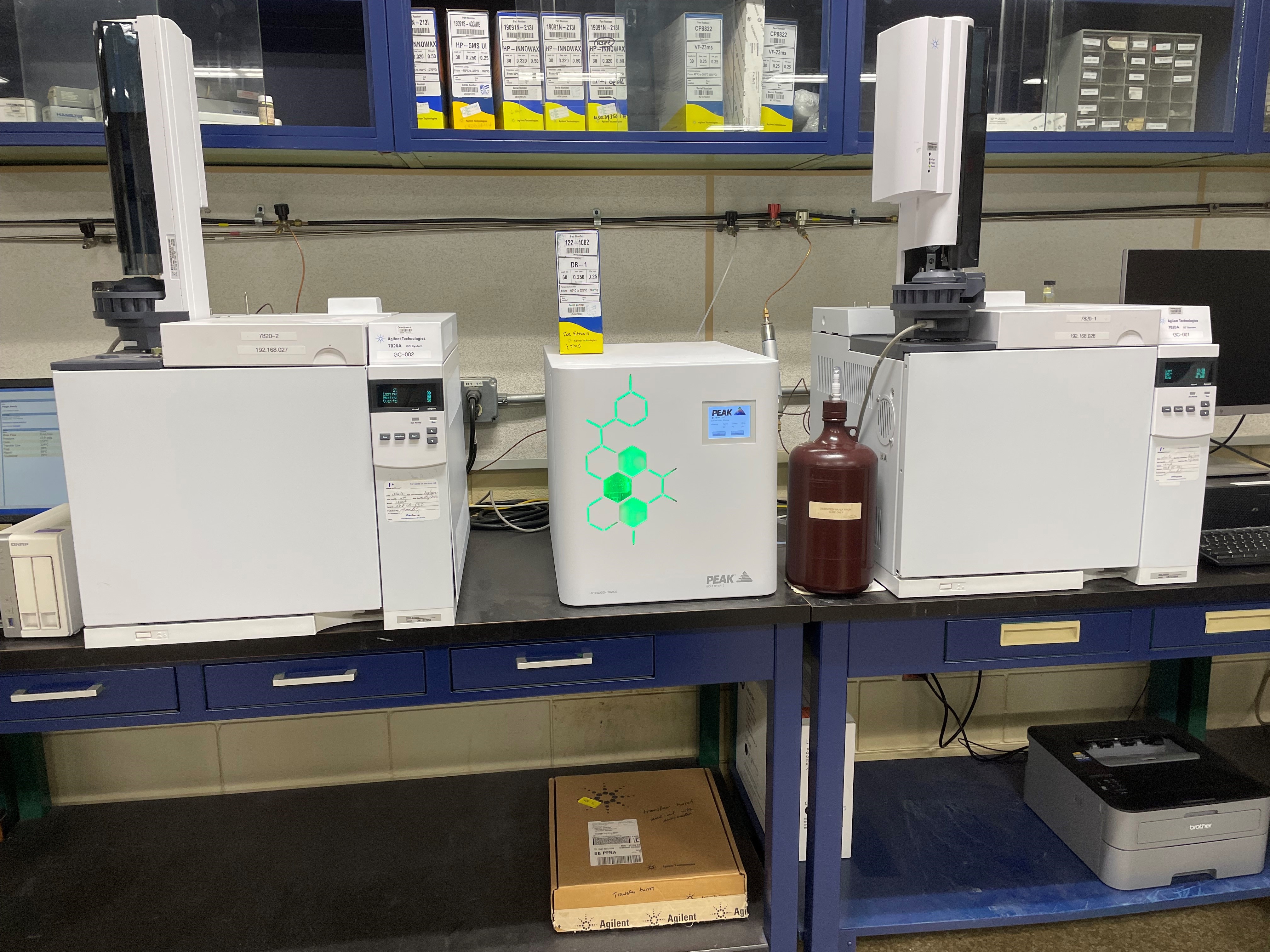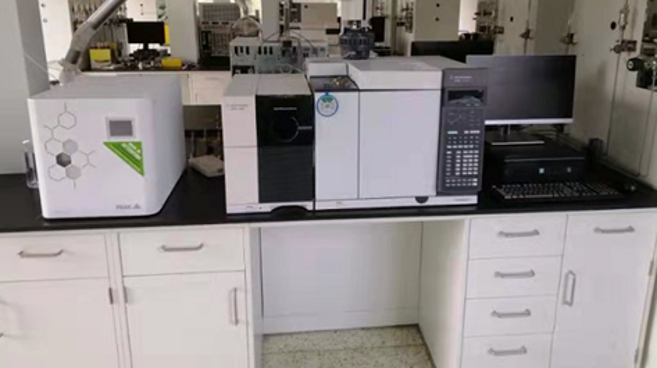7 compressed gas cylinder safety issues a gas generator can solve
Compressed gas cylinders are used in research labs across the globe and they are used in abundance. When installed and handled correctly they can be a safe and reliable solution. When they are poorly treated, however, the lab is open to a number of safety risks.
We’ve examined seven safety issues that come with the presence of compressed gas cylinders in the lab and identified the ways that an on-site gas generator can help you overcome these issues.

1. Cylinders not secured properly
Cylinder risk
A cylinder needs to be supported above its midpoint – 70-80% of the height of the cylinder is usually a good benchmark for this support. The cylinder needs to be supported on something that is fixed such as a wall or a bench; the support should be strong enough to hold the cylinder and it should not be supported to another cylinder.
If you have multiple cylinders secured by a single support point, these can easily injure lab staff when this support is removed.
Generator solution
A gas generator, on the other hand, does not need to be secured. It can be placed next to your instrument or even moved around the lab on the attached wheels if you need to safely move your gas supply. By having an on-demand gas generator in your lab, you are removing the need to switch cylinders which also removes the hazards associated with the job of replacing gas cylinders when the supply runs out.
2. Failing to separate incompatible gas cylinders
Cylinder risk
There are a number of safety codes which state that flammable, toxic and oxidizing cylinders need to be separated by either 25 feet or an appropriate fire wall. The NFPA and the IFC both state the requirements for the separation of incompatible materials, but these concerns are, again, rectified where a gas generator can be used as an alternative source of gas.
Generator solution
By introducing the use of a gas generator to the lab you are removing the need for gas cylinders which, in turn, removes the need for separating the incompatible gas cylinders.

3. Not having a plan in place to deal with leaking gas cylinders
Cylinder risk
Labs should always have an emergency plan in place if compressed gases are stored or handled. This could be different from lab to lad, depending on the type of gas that is used, but all scenarios should be carefully evaluated and a plan should be in place before a critical incident occurs.
Generator solution
PEAK’s range of on site gas generators come with built in safety features which include internal and external leak detection, auto shutdown features and alarm functionality which kicks in in the event of a gas leak. With these safety factors present in the generators from the point if installation, you already have the peace of mind built into the generator should anything go wrong, removing any uncertainty in the event of a leak.


